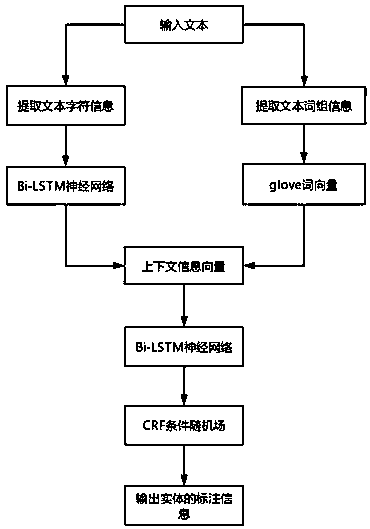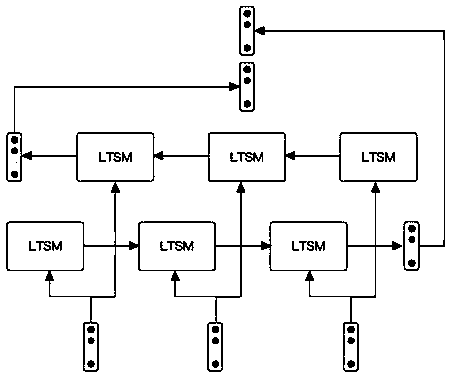Named entities recognition method based on bidirectional LSTM and CRF
A named entity recognition, two-way technology, applied in the direction of neural learning methods, special data processing applications, instruments, etc., can solve the problems of low efficiency and low accuracy of named entity recognition, to solve the problem of named entity recognition, reduce workload, The effect of simplifying information processing
- Summary
- Abstract
- Description
- Claims
- Application Information
AI Technical Summary
Problems solved by technology
Method used
Image
Examples
Embodiment
[0023] This embodiment provides a named entity recognition method based on two-way LSTM and CRF, the flow chart of the method is as follows figure 1 shown, including the following steps:
[0024] Step 1: Use open source tools to tokenize the text and decompose phrases into individual character forms. Count and number characters, words and tags, construct character tables and phrase tables. Manually annotate the text, and construct a label table by counting the text labels.
[0025] In this step, we use the BIO annotation set to annotate the text corpus, that is, the annotation set contains {B, I, O}, where B represents the beginning of the named entity, I represents the rest of the named entity, and O represents the part that does not belong to the entity. For named entities we use PER for person, LOC for location, and FAC for facility.
[0026] Step 2: Express the character features in step 1 as vectors, initialize the character table C, determine the dimension d1 of each ...
PUM
 Login to View More
Login to View More Abstract
Description
Claims
Application Information
 Login to View More
Login to View More - R&D
- Intellectual Property
- Life Sciences
- Materials
- Tech Scout
- Unparalleled Data Quality
- Higher Quality Content
- 60% Fewer Hallucinations
Browse by: Latest US Patents, China's latest patents, Technical Efficacy Thesaurus, Application Domain, Technology Topic, Popular Technical Reports.
© 2025 PatSnap. All rights reserved.Legal|Privacy policy|Modern Slavery Act Transparency Statement|Sitemap|About US| Contact US: help@patsnap.com



